Just a minute - aaah, that's better! It's amazing how a bit of wind release can benefit one's heart, body and frame of mind, isn't it? There's certainly been a lot of wind, of one kind and another, generated in these islands of late, along with quite a lot of heat and slightly less light, much of it in connection with the proposed Viking Energy windfarm which, if constructed, would affect the skyline of much of the central mainland of Shetland.
It appears that a considerable majority of the Shetland population is opposed to it, and I, in my usual curmudgeonly manner, am swimming against a strong tide of public opinion in my conviction that the proposed development should take place, and that these islands will live to regret its rejection. I have several reasons for holding this belief.
Shetland's economy is fragile. The oil industry, which has served Shetland so well as an employer of islanders, is not going to last forever - oil and gas are finite resources (unlike wind!). Even taking into account the new fields in the Atlantic, which have extended the life of the Sullom Voe Terminal far beyond its original projected lifespan, the well of employment generated by the oil industry will dry up, as far as these islands are concerned. The future of other major employers, such as the fishing and fish farming industries, is equally uncertain. The former is under attack from the very body which should be supporting it, the EU, as well as the effects of climate change and fleet effort on stocks. The latter is subject to infectious diseases and uncertain markets, and many businesses engaged in this activity have already gone under. This leaves small indigenous traditional industries such as knitwear, croft-based electronic ventures, crofting itself and tourism (Lord help us!). We need a new source of income and employment which, if managed properly at the Shetland end, can keep these islands in the manner to which we have become accustomed over the past few decades. Wind is a natural resource of which Shetland has never been in short supply, and it is all wonderfully renewable! The abundance of this commodity has been the main feature of Shetland's meteorology over the centuries, to the extent that it has cost hundreds of lives, chiefly, but not exclusively, at sea. Having had it operating for so long against us, why not have it working for us, for a change?
The Shetland Islands Council organised several public meetings, at various locations throughout the Shetland mainland, during the past week, for the purpose of having the views of the population aired on the subject of the proposed development. At each of these meetings, none of which I am ashamed to say I attended, a vote was taken which, without exception, was firmly against the windfarm. Many of the objections were (perversely, in my opinion) on environmental grounds. The turbines, if built, would be situated on the hilly ridges which run the length of much of the mainland of Shetland. The surface of these hills is comprised almost entirely of varying depths of peat, and this, it is true, provides a habitat for a large variety of waders and other ground-nesting birds. But peatland is not exactly in short supply in these islands. My back develops a psychosomatic ache whenever I think of the hours spent toiling in the stuff during my formative late springs and summers at the south mainland parish of Sandwick.
Please forgive me for beginning to beat my drum against "colonial incomers" here again. One woman, who spoke at one of last week's meetings, stated that the one reason she settled here was to look at the unspoilt views of the place, and, if the windfarm development was to go ahead in its present form, she'd leave. Well, if she only came here to gawp at the scenery, please don't let me detain her! The representatives of other single-interest groups uttered their objections too. One speaker mentioned the possible failure of breeding populations of birds, not caring to mention his lack of concern for the economic wellbeing of the next generation of Shetlanders. If all human enterprise is to be sacrificed on the altar of ornithological interests, the prospects are poor for the working communities of Shetland. The dictatorial "scientific"and wildlife organisations, whose lobbies (drawing most of their support from the urban areas of Britain) are much more powerful than those of Shetlanders working at traditional (and new) industries, would be quite happy to see Shetland reduced to a kind of hippy colony (it's how many see us anyway!), in which the only people earning a decent living are social workers and drug dealers.
Many of the objections raised to the windfarm development are financial. It is going to cost an awful lot of money, let's face it, to build this scheme, but the benefits must surely outweigh the large initial outlay, and it is down to our negotiators to get a good deal for the Shetland power-consumer at the outset, so that he or she will be able to go to his or her cheaply-powered warm bed at night, with a clear conscience as to the source of his or her comfort, which, in turn, is having little negative effect on the global environment. And will these hilltop turbines be such an awful blot on the landscape?
The Grumpy Old Artist

Would YOU pose for this man???
Exhibition Poster

Catterline Event, 2011
Oil Painting by Jim Tait

Helford River, Cornwall
Oil Painting by Jim Tait

Full-riggers "Georg Stage" and "Danmark"
Other Recent Works
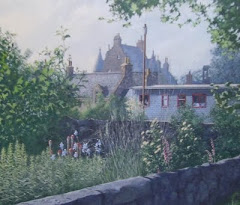
Fordyce Castle and Village

Hay's Dock, Lerwick

Shetland-model Boats at Burravoe, Yell
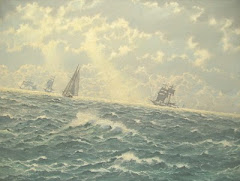
Tall Ships Seascape

The Tour Boat "Dunter III", with Gannets, off Noss
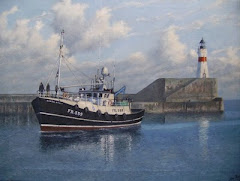
The "Karen Ann II" entering Fraserburgh harbour
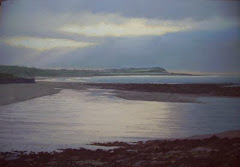
Summer Evening, Boyndie Bay
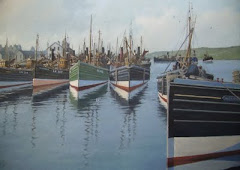
1930s Lerwick Harbour

Johnshaven Harbour

"Seabourn Legend"
Greeting Cards!

Now Available in Packs of Five or in Assorted Sets of Four
Sunday, 4 October 2009
Subscribe to:
Post Comments (Atom)









No comments:
Post a Comment